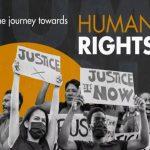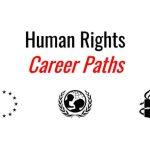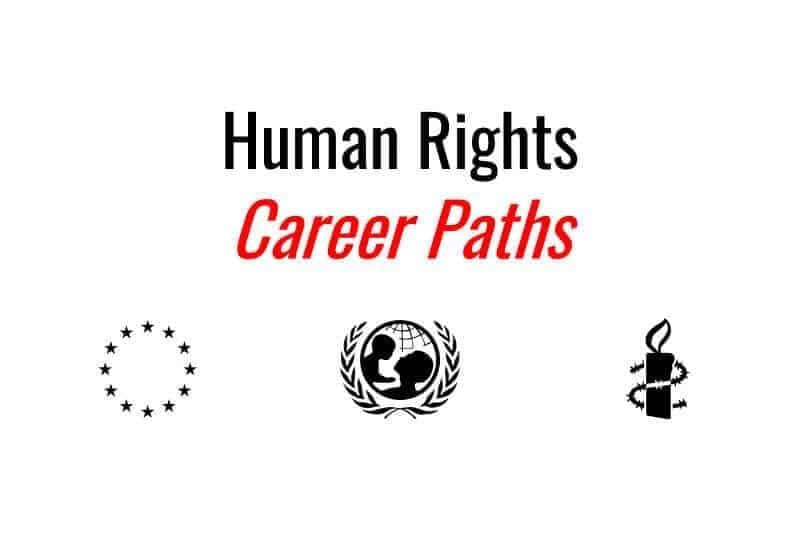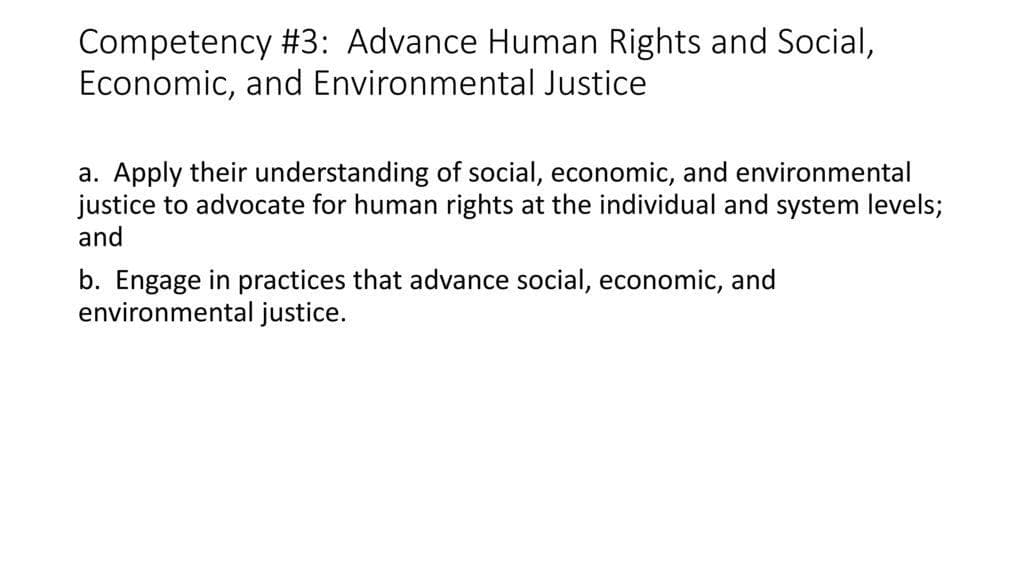The struggle for human rights is not merely a point in history, but an ongoing battle that continues to impact lives across the globe. The fight to ensure dignity, equality, and justice for all individuals disregards borders and cultures. This conversation gives us a broad overview of the human rights struggle’s origins, significant milestones, challenges, and the importance of continued activism.
For a deeper understanding, let’s delve into significant aspects of the struggle for human rights:
- Origins of Born Free Children: A pivotal point in the human rights struggle where children were recognized as free entities with specific rights.
- Milestone Events in Human Rights: Critical instances that played a considerable role in shaping global perspectives towards human rights.
- The Human Rights Struggle: 1948: The year marking the adoption of the Universal Declaration of Human Rights signals a global commitment to protecting human dignity.
- Revitalizing Human Rights Advocacy: The constant need to reinvigorate advocacy efforts to effectively address emerging human rights issues.
- Institutions and Human Rights Attitudes: The significant role institutions play in molding societal attitudes towards human rights.
- Universal Declaration of Human Rights: The cornerstone document establishing the fundamental human rights to be universally protected.
The ongoing struggle for human rights demands our active participation and vigilance to ensure its triumph over oppression and injustice.
Contents
- Origins of Born Free Children
- Milestone Events in Human Rights
- The Human Rights Struggle: 1948
- Revitalizing Human Rights Advocacy
- The Demographics of Struggle
- Rules and Guidance for Rights Advocates
- The Appeal for Pragmatic Approaches
- Institutions and Human Rights Attitudes
- Human Rights as a War Preventive
- What Role Does the Center for Preventive Action Play in Mitigating Armed Conflicts?
- How Does CPA Respond to Sources of Instability?
- What are CPA’s Contribution in Engaging the U.S. Government and Media?
- Does CPA Collaborate With International Institutions?
- What Expertise Does CPA Provide?
- What is The 2023 Preventive Priorities Survey?
- Universal Declaration of Human Rights
- Evolution of Vocal Human Rights Advocates
- Influence of Global and Insurgent Legalities
- Unseen Heroes
Understanding the Struggle for Human Rights: A Deeper Dive
The origins of the born-free children concept help highlight how far we’ve come in recognizing children’s unique needs and vulnerabilities.
The various milestone events serve as a sobering reminder of the challenges overcome and those yet to face in this struggle.
Revitalizing advocacy for human rights underscores the dynamic nature of this battle, where complacency can lead to significant setbacks.
The role of institutions and the Universal Declaration of Human Rights underscore the importance of formal frameworks in sustaining and promoting the struggle for human rights.
Origins of Born Free Children

The term ‘Born Free’ stems from a profound truth: every human being enters this world free and equal in dignity and rights.
This principle forms the bedrock of a comprehensively intricate international framework dedicated to safeguarding our inherent human rights.
International Framework
Historically, protecting these rights evolved into a global commitment through key declarations and treaties.
The Universal Declaration of Human Rights, alongside others like the International Covenant on Civil and Political Rights, set pivotal standards.
Key Principles
These standards illuminate four cardinal principles: non-discrimination, best interests of the child, survival and development, and freedom from harm.
A complementary fifth principle enshrines the child’s right to be heard and participate in decisions affecting them.
Child Rights & Government Responsibilities
These standards address a spectrum of children’s rights,
From civil and political to economic, social and cultural rights- all deserving respect, protection and fulfillment by every government.
To know more about these principles, visit UNICEF’s guide.
Governments are obligated not just to respect these rights, but to actively protect them through effectively implementing laws and policies.
Born Free: A Struggle Towards Recognition
Despite these measures, the struggle for recognition…
Milestone Events in Human Rights

In the yearning for equality, Norway’s prison system saw transformations.
New policies reduced isolation and catered to the mental health of inmates.
- Thailand/Russia: Bi-2 band’s safe departure from Thailand.
- Belgium: Withdrawal of a protest-hinderance bill.
- Belgium: A halt on arms exports to Israel.
- Iraq: Liberation of journalist Guhdar Zebari after years in detention.
The European Union has called for investigations against Iran’s officials, condemning the human rights violations in the country.
Moreover, Japan witnessed a historic movement towards equality with court decisions stating the same-sex marriage ban as unconstitutional.
- European Union: Resumed funding to the UNRWA by the European Commission.
- Burkina Faso: Release of human rights defender Daouda Diallo.
- France: Abortion being enshrined as a guaranteed freedom in the Constitution.
The fight for human rights is an ever-evolving landscape, with victories and setbacks marking its history. Each step forward encourages optimism.
The Human Rights Struggle: 1948

1948, a pivotal year in human rights evolution, witnessed some landmark actions in the United States. The year is remembered for its notable advancements in civil rights and anti-discrimination protocols.
Let’s revisit the chronology of key events that shaped the history of human rights struggle that year:
- April: Desegregation of the Military – President Harry S. Truman issued Executive Order 9981 to explicitly ban segregation and discrimination within the U.S. armed forces.
- July: Advancements in Democratic Platform – Truman directed the Democratic Party to adopt a formidable civil rights plank, which drew opposition from Southern democrats.
- October: Formation of Progressive Party – The Progressive Party assembled around former Vice President Henry Wallace, fought for immediate desegregation, anti-lynching laws, and a permanent Fair Employment Practice Committee.
This timeline serves as an insightful historical reference to understand how change was initiated. We can infer that societal transformation and human rights progression require time, robust policy changes, and relentless advocacy.
More comprehensive details surrounding these events can be found on History.com’s Civil Rights Movement Timeline.
The courage and conviction demonstrated during this period have been instrumental in shaping future human rights movements. This journey continues with new struggles emerging across different parts of the world.
I hope this snapshot of 1948 helps you gain perspective on our long-standing struggle for equality and justice. Stay tuned for more insights on critical years in human rights history.
Revitalizing Human Rights Advocacy

International human rights and humanitarian law provide the beacon guiding my work.
A deep respect for human dignity underscores every opinion I share.
Inspired by organizations like Human Rights Watch, I focus on situations requiring urgent attention.
My scope isn’t confined to crises, but extends to long-standing or deteriorating human rights problems as well.
Research forms the backbone of my advocacy, aided by a network of sources and contacts.
| Country | Issue | Action needed |
|---|---|---|
| Bujumbura | Political instability | Transparent election process |
| Cairo | Freedom of speech | Protect journalists’ rights |
| Bangkok | Human trafficking | Improve law enforcement |
| Tashkent | Labor rights | Eradicate child labor |
| Johannesburg | Economic inequality | Promote social justice |
| *Information updated periodically* | ||
The table offers a glimpse into some areas where concerted efforts can foster substantial change.
I collate evidence from interviews, official reports, on-site observations, and more.
Even in closed societies with restricted access, I strive to uncover the truth.
Remote interviews and testimonies from trusted sources help me in this endeavor.
After rigorous research, I determine the key stakeholders who can bring about change.
Through targeted advocacy, I seek to influence these entities to address human rights violations.
Collaborations with governments, organizations, and media outlets enhance the reach and impact of my initiatives.
The Demographics of Struggle

Our nation’s face is continually changing. With diversity on the rise, the traditional notion of a single racial majority will likely disappear by 2055.
New immigrants, 59 million in the last half-century, have largely driven this shift. Today, nearly 14% of Americans hail from foreign lands compared to just 5% in 1965.
Interestingly, Asia has taken over Latin America, including Mexico, as the leading source of new immigrants in the U.S. This change in national demographics has major implications for our stance on human rights.
One significant trend is the declining proportion of Christians—a drop from 78% in 2007 to 71% in 2014. The numbers of religious “nones”, especially among millennials, have surged seven percentage points during that time period.
“While the U.S. remains home to more Christians than any other nation, religiously unaffiliated individuals now constitute the second-largest religious group in roughly half of the world’s countries.”
The future global religious landscape predicts an increase in Muslims due to their younger age and higher fertility rates. By 2050, Muslims and Christians are projected to be nearly equal in number.
In contrast to past trends of rapid global and U.S. population growth from 1950 to 2010, future growth is expected to slow down considerably. Surprisingly, the aging population will emerge as a significant demographic group.
This demographic shift is raising concerns across East Asia where majorities consider it a significant issue for their countries’ future. The demographic landscape riddled with human rights struggles is evolving rapidly. To track these changes and gain more insights Pew Research is a great resource.
Rules and Guidance for Rights Advocates

The concept of natural rights, or “Mother Earth” rights, offers legal protections similar to those given to humans and corporations. This idea is encapsulated by various UN declarations.
Several countries, including Ecuador, Bolivia, Uganda, the US, Canada, Brazil, New Zealand, Mexico, and Northern Ireland have incorporated these rights into their legal structures.
Paradox in Legal Personhood
Legal scholars highlight the irony of granting non-human entities such as corporations legal personhood while denying the same to ecosystems and species.
Criticism arises from this paradoxical stance especially concerning the UK; it acknowledges diverse cultures and Indigenous worldviews but imposes a Western understanding of rights and law.
Activists and Scholars on Nature’s Rights
Environmental activists and scholars posit that recognizing nature’s rights can enhance protections for species and ecosystems ravaged by human activities.
Countries like Bolivia and Ecuador that recognize nature’s rights have successfully utilized these in their judicial decisions and laws.
Rights for Nature: Broad Perspectives
The rights-for-nature conversation encompasses numerous perspectives. It includes granting specific animals rights or extending them to rivers, mountains, and nature as a whole.
Tech advances coupled with Indigenous wisdom are also seen as part of the path towards more effective environmental protections.
A growing consensus among advocates surmises that acceptance of this notion is increasing owing to escalating climate change concerns and biodiversity loss.
The Appeal for Pragmatic Approaches

The pressing issue at hand is the rampant corporate price gouging.
This unfair practice has led to a surge in prices for goods and services since the onset of the 2020 pandemic.
Affordability Crisis
Canadians are forced to bear these inflated prices, leading to an affordability crisis.
The root cause is clear: corporate greed and the ongoing quest for bloated profit margins.
Corporate Profits Surge
Interestingly, despite the global crisis, corporate profits have increased.
Profit margins have exceeded those registered before the pandemic which is highly disconcerting.
Call for Action
The solution lies in stabilizing prices, providing fair affordability to goods and services.
There’s a critical need for proactive public policies, focused on creating shared prosperity and equitable wealth distribution.
An interesting source shedding light on various social movements advocating equality can be found here, including topics like income inequality and democratic renewal.
The Green Economy
Inclusive growth should be accompanied by sustainable development; innovative greener industries are required.
This will not only create jobs but also fuel Canada’s long-term economic well-being.
Social Democracy
Social democracy emphasizes equality with recognition of differences: a variety of social movements like feminism, anti-racism, environmental movements etc., play a key role.
This includes fighting for disability rights and Indigenous rights as well.
Institutions and Human Rights Attitudes

As the stewards of democracy, parliaments play a pivotal role in promoting and protecting human rights.
The International Covenant on Civil and Political Rights, along with its counterpart on Economic, Social and Cultural Rights, form the bedrock of the International Bill of Human Rights.
- Legislative Responsibilities: Ensuring laws align with global standards is crucial.
- Treaty Ratification: Progress entails ratifying and implementing international pacts for human rights.
- Legislation Modification: Challenging or repealing laws that contradict human rights is vital.
- Access to Justice: It’s paramount to guarantee equal access to justice and effective remedies.
The oversight of human rights extends beyond just legislation. Parliamentarians must conduct impact assessments during the legislative process.
This allows for wide-ranging input, essential for crafting robust laws protective of citizens’ vested interests.
A functional monitoring mechanism, such as a dedicated human rights committee, ensures compliance with national human rights norms.
Said institutions should remain accessible and responsive to everyone; turning a deaf ear to human rights issues is not an option.
The duty doesn’t end with merely protecting existing laws. Advocacy is key: raising awareness about these matters through public statements and media empowers citizens.
A dialogue with governments or other actors can shed light on violations that otherwise might go unnoticed.
Human rights education impacts both schools and public institutions, fostering an environment that respects these norms.
International cooperation amplifies our collective voices while providing unique perspectives on human rights issues.
An independent judiciary ensures fair application of international standards in the legal system.
Ethical media reporting on human rights issues is vital, shielding freedom of expression and journalistic integrity.
The private sector must respect human rights, promoting corporate social responsibility that adheres to global standards.
Even during crises like emergencies or conflicts, ensuring the protection of human rights is imperative.
The right to a healthy environment must also be protected, while addressing environmental issues affecting vulnerable groups.
Finally, accessible mechanisms for handling human rights complaints and providing effective remedies for violations are of paramount importance.
Human Rights as a War Preventive

What Role Does the Center for Preventive Action Play in Mitigating Armed Conflicts?
The Center for Preventive Action (CPA) attempts to devise strategies for preventing and mitigating armed conflicts across the globe. Their effort is especially focused on regions impacting U.S. interests.
How Does CPA Respond to Sources of Instability?
To manage emerging sources of instability, CPA issues regular reports. These reports provide concrete recommendations for limiting potential violence, which can be utilized by the U.S., the international community, or local actors.
What are CPA’s Contribution in Engaging the U.S. Government and Media?
CPA interacts with the U.S. government and media by briefing administration officials and congress members about its findings. It also facilitates contacts between U.S. officials and significant local and external actors, raising awareness about potential global flashpoints.
Does CPA Collaborate With International Institutions?
Yes, CPA leverages its established influence in the U.S. policy arena by building networks with international organizations. This strategy amplifies the reach of CPA’s recommendations on conflict prevention measures.
What Expertise Does CPA Provide?
CPA offers a wealth of knowledge on conflict prevention through research, case studies, and lessons learned from past instances of bloodshed. Such insights serve as helpful information for preventing or easing future deadly conflicts.
What is The 2023 Preventive Priorities Survey?
The 2023 Preventive Priorities Survey assesses ongoing and potential conflicts based on their likelihood of taking place in 2024. This survey solicits responses from individuals from various backgrounds and estimates the impact on U.S. interests.
Universal Declaration of Human Rights

The United Nations was born in the aftermath of World War II, with a mission to foster global peace.
Among its monumental tasks was drafting a document that outlined global human rights.
Led by Eleanor Roosevelt, the committee delivered what is now hailed as the Universal Declaration of Human Rights.
| Year | Event |
|---|---|
| 1945 | United Nations Founded |
| 1948 | Universal Declaration of Human Rights Drafted |
| Present | 192 Member States |
| 1948-Now | All Member States have agreed to the Declaration |
| Table: Key events in the history of the Universal Declaration of Human Rights | |
This timeline showcases the significant milestones in human rights development.
Eleanor Roosevelt beautifully encapsulated the essence of these rights in her famous quote:
“In small places, close to home…every man, woman, and child seeks equal justice, equal opportunity, equal dignity without discrimination. Unless these rights have meaning there, they have little meaning anywhere.”
The declaration is not just a piece of paper; it’s a beacon for justice and equality.
To uphold these rights locally is essential for worldwide progress.
The full text and simplified versions of the declaration are invaluable resources for understanding these principles.
Evolution of Vocal Human Rights Advocates

The quest for human rights has been a turbulent journey, marked by significant highs and devastating lows. In 2022, America’s democracy faced major tests on multiple fronts.
The developments included the Russian invasion of Ukraine, which affected global stability, and amplified concerns about gas prices and inflation.
Furthermore, the COVID-19 pandemic continued to disrupt lives, posing severe challenges to basic human rights.
In a move that rattled the women’s rights advocates, SCOTUS overturned the monumental Roe v. Wade ruling, putting abortion rights under threat.
In this chaotic atmosphere, some champions of human rights emerged. Take Gretchen Whitmer, for instance. As Governor of Michigan, she defended fundamental freedoms like reproductive rights and voting access fiercely.
Then there is Bennie Thompson. As Chair of the House Select Committee to Investigate the January 6th Attack on the United States Capitol, he played a pivotal role in probing into this unsettling event.
Over in Silicon Valley, Ro Khanna has been challenging big corporations through proposed taxes aimed at preventing price gouging by oil companies.
Meanwhile, Maxwell Frost made history as the first Gen Z member in Congress. His campaign prioritized key issues such as gun safety and climate change.
All these brave advocates have contributed to the evolution of the human rights battlefield. Their efforts remind us that no matter how bleak things may seem, hope can be found.
Influence of Global and Insurgent Legalities

The fabric of our global society is woven from a diverse tapestry of legal systems and cultures. These systems, often varied and complex, define the contours of international relations and commerce.
Working in a multinational arena—be it trade, technology, finance, or human rights—is a task requiring profound understanding. One must grasp the nuances of these different legal structures.
- Human Rights Advocacy: Central to the global stage, human rights advocacy necessitates comprehensive knowledge about varying legal systems.
- Economic Migration: The rules governing movement for economic opportunity differ widely between nations.
- International Corporate and Antitrust Law: Global commerce is shaped extensively by international laws and regulations.
- Global Governance: Understanding the intersection of distinct legal systems is key to effective global policy formulation.
A mastery of these areas can equip one to make a significant impact on pressing issues facing our world. Legal education platforms that explore international legal systems bring immense value.
Cultivating this expertise creates an environment that fosters debate and collaboration. It provides valuable insights for students, scholars, and activists alike.
This collaborative approach aids in addressing crucial policy issues. It also promotes innovative research paving the way for advancements in global policymaking and human rights advocacy.
Unseen Heroes
The saga of Born Free Children positions them in the crux of human rights battles. Their persistent and courageous fight is a testament to the resilience of youth, further highlighting the need for relentless advocacy and protection of their rights. Their struggles underline the urgency to address child rights issues, making it a global priority.








